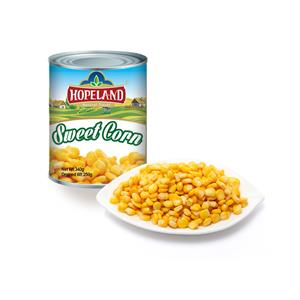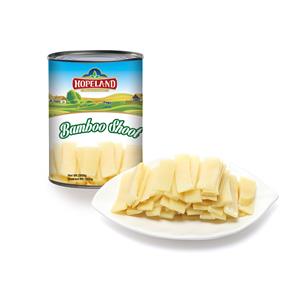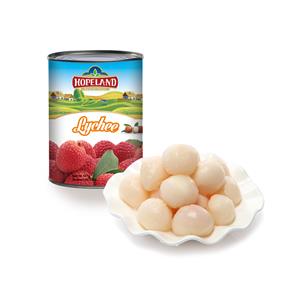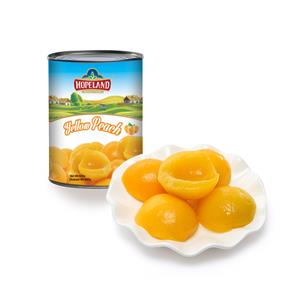Prices Keep Rising for Yellow Peach in China
Introduction
Since spring 2025, China has witnessed a clear surge in the price of yellow peach (黄金蜜桃 / 黄桃), with several major producing regions seeing month on month increases of 20 %–50 % or more. While there was volatility earlier in the season—some periods of decline in May—the overall trend through June and early July has tilted sharply upward. This article explores what's driving the rally, how consumer demand and production shifts are playing a role, and what to expect in the months ahead.
1. Recent Price Trends: Spikes in Key Producing Regions
1.1 June–July 2025: Significant Gains
Anhui province (Dangshan County): The variety “黄桃 83” rose to approximately 3.17 yuan per jin by July 6, 2025, marking a 10.07 % increase compared to eight weeks earlier (~May 11).
Shandong province (Mengyin County): “黄金蜜桃” reached 7.73 yuan per jin by July 3, up 14.69 % compared to early May .
Hubei province (Yicheng City): “黄金蜜桃” rose to 2.80 yuan per jin by June 26, a 45.08 % gain compared to May 1 .
These gains come after a period in late May where some regions saw prices fall:
In Anhui Dangshan, variety “黄桃 83” fell about 54.7 % by May 21, from around 7.00 yuan to 3.17 yuan per jin.
In Hubei Yicheng, “黄金蜜桃” declined about 40.3 % as of May 22, from 3.25 to 1.94 yuan per jin .
Yet by late June and early July, price momentum reversed decisively.
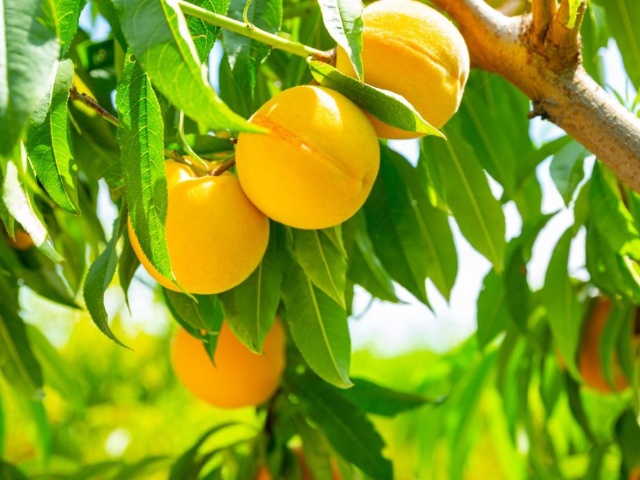
2. Supply Constraints and Production Trends
2.1 Droughts and Spring Cold Spells
The USDA’s 2025/26 season forecast, released July 9, predicts peach and nectarine production in China will drop about 3%, reaching 17 million tonnes, due to spring cold spells and dry weather especially in northwest regions (Shaanxi, Shanxi, Gansu) and apples of workers cutting planting in Jiangsu and Shanghai due to rising labor costs .
2.2 Shrinking Planting Areas & Crop Substitution
In the North China plain (e.g., Shandong, Hebei), labor cost and profitability pressures have led many smallholders to shift from peaches to cherries and other crops .
Yunnan province, leveraging its climate, is expanding out of season peach production to fill gaps from April through December, bolstering supply but still focused on early/late season rather than peak yellow peach season .
2.3 Focus on Specialty Varieties
Farmers increasingly favor hard flesh yellow peaches, early or late maturing specialty varieties including yellow flesh and flat forms. These bring higher returns and longer shelf life, especially suited for shipping to distant urban markets .
However, total peach growing area continues to shrink, and seasonal peaks remain vulnerable to yield fluctuations.
3. Consumer Demand & Market Dynamics
3.1 Preference for Premium & Specialty Fruit
Chinese consumers—especially in first- and second-tier cities—are showing stronger preferences for premium, safe, organic or branded fruit. Yellow peach, with its sweet aroma and firm texture, is a popular choice for both fresh eating and gifting .
As early as 2023, the yellow peach/canned peach sector reached 123.52 billion yuan in market size, with revenue up over 3 % in early 2024. New product forms like freeze dried slices, functional peach enzyme, and gift box packaging helped drive growth .
3.2 Growing Role of E-commerce & Cold Chain Logistics
Modern channels, including community group purchase, direct-to-consumer platforms (JD, Hema, Tmall), and cold chain logistics, have enabled high quality yellow peaches from distant regions to reach urban consumers faster—often at a 30 % premium over local market prices .
This infrastructure supports higher farmgate prices in producing zones that link well to ecommerce networks.
4. Regional Price Drivers: Case Studies
4.1 Anhui (Dangshan County) – “黄桃 83”
After a substantial drop in May, by July 6, 2025 the price rebounded to 3.17 yuan per jin, up 10 % in eight weeks from ~May 11 levels.
This rebound likely reflects depleting early season stock and shift toward mid season fruit with better quality but tighter supply.
4.2 Hubei (Yicheng City) – “黄金蜜桃”
Price reversed from a 40 % drop by May 22, rising to 2.80 yuan per jin by June 26—a gain of 45 % over four weeks as early fruit sold out and harvesting moved into higher graded lots .
4.3 Shandong (Mengyin County) – “黄金蜜桃”
Notorious for high grade yellow peaches, Mengyin County saw “黄金蜜桃” at 7.73 yuan per jin by July 3, up 14.7 % from early May (~6.74 yuan) .
These reflect the premium export-grade fruit aimed at long-distance shipment and upscale retailers.
5. Broader Industry Context & Trends
5.1 National Production vs Demand
In 2023, China produced 759,000 tons of yellow peach, with domestic demand almost matching supply (75.2 tons), and market value reaching 123.5 billion yuan.
In 2024, production slightly dipped to 715,000 tons, while revenue still rose 3.6 % in the first half .
5.2 Processed Products Expanding
Yellow peach is a dominant flavor in the canning and juice markets. With functional forms (freeze-dried, enzyme drinks), processors are viewing yellow peach as higher-margin than fresh volumes, supporting higher farmgate pricing.
5.3 Shifting Supply Calendar
Though Yunnan and some southern provinces provide out of season fruit, the main yellow peach season remains May through August, with peaks in July–August. High grade fruit from Shandong, Anhui, Hubei, and Shaanxi tends to dominate urban retail in that window .
6. Why Prices Are Still Rising Overall
6.1 Tighter Supply Meets Steady to Strong Demand
Reduced planting areas, weather-induced production dips in northern zones, and early depletion of lower grade lots have combined to tighten supply.
Meanwhile, demand from urban consumers remains resilient, especially for premium yellow peach, sustaining upward price pressure.
6.2 Grading and Quality Segmentation
Growers and distributors are sorting fruit by quality: premium export-grade or ecommerce bound fruit fetches far higher prices (e.g. ~7–8 yuan per jin in Shandong), while commodity-grade lots may sell into wholesale at lower levels but in smaller volume due to season exhaustion .
6.3 Structural Demand Side Tailwinds
Rising expectations for food safety, organic certification, and traceability favor branded or high quality yellow peach.
Growth of gifting fruit boxes and packaged forms further supports higher margins for producers and suppliers.
7. Implications Across the Supply Chain
7.1 For Farmers & Producers
Farmers growing specialty or high grade yellow peach are currently benefiting from stronger pricing, especially if they are in regions with good access to ecommerce or cold supply chains.
Smallholders relying on commodity grade fruit face risks from price volatility and competition.
7.2 For Wholesalers & Retailers
Wholesale markets in Beijing, Shanghai, etc., are seeing premiums for yellow peach compared to baseline wholesale fruit prices.
Retailers stocking yellow peach gift box products may pass on higher wholesale costs to consumers but maintain higher margins.
7.3 For Processors & Exporters
Demand for canned yellow peach, juice, freeze dried snack, etc., continues to grow.
Export markets—Southeast Asia, Central Asia, Russia—remain promising outlets. Some local companies are ramping up export volumes of hard flesh yellow peach to Russia and Southeast Asia.
8. Outlook: What to Expect Rest of 2025
8.1 Second Half Yellow Peach Season (July–August)
With the season at peak, premium varieties (e.g. Shandong golden honey peach) may maintain 6–8 yuan per jin, while lower-grade fruit may languish at 3–4 yuan.
Price spreads between regions are likely to widen, with high grade fruit marginally increasing and commodity fruit down-trending as supply normalizes.
8.2 Late Season & Southern Fruit
Yunnan and other south/west producers offering off season fruit may help dampen price spikes in August–September, though cold-chain and quality limitations remain .
8.3 Risk Factors
Unexpected weather events (late frosts, heat waves) in key regions could disrupt supply and further escalate prices.
Consumer spending constraints: if economic conditions weaken, demand for premium fruit may moderate.
Competition from imports or alternative fruits: in urban markets, consumers may shift to imported cherries, plums, or other fruits if yellow peach becomes prohibitively expensive.
9. Summary Table: Price Moves by Region & Variety
Region/Province | Variety | Date | Price (yuan/jin) | Change vs ~8 weeks prior |
Anhui (Dangshan) | 黄桃 83 | July 6 2025 | ~3.17 | +10.1 % |
Shandong (Mengyin) | 黄金蜜桃 | July 3 2025 | ~7.73 | +14.7 % |
Hubei (Yicheng) | 黄金蜜桃 | June 26 2025 | ~2.80 | +45.1 % (4 weeks) |
Anhui (Dangshan) | 黄桃 83 | May 21 2025 | ~3.17 | –54.7 % (since Apr) |
Hubei (Yicheng) | 黄金蜜桃 | May 22 2025 | ~1.94 | –40.3 % (since Apr) |
10. Key Drivers at a Glance
Weather & supply shocks—spring cold/drought reducing output in major production areas.
Planting shifts, especially decreasing acreage in northern provinces and substitution with higher profit crops.
Rising consumer expectations for quality, traceability, special packaging and fruit form.
Expanded e commerce reach, with cold chain logistics enabling higher farmgate prices.
Differentiation by variety and grade, leading to strong upward price divergence.
11. Recommendations
For Growers
Focus on premium varieties (hard flesh yellow peach, golden honey peach) that command higher prices.
Gain access to ecommerce or cold supply chain partners to expand reach and pricing power.
Diversify timing via greenhouse or southern late season production to avoid price troughs.
For Wholesalers / Retailers
Stock a mix of mid season and premium yellow peach to balance volume and margin.
Target gift box and quality channels where consumers accept premium pricing.
Monitor regional supply flows—as northern supply tightens, sourcing from south/west may fill gaps.
For Processors & Exporters
Invest in value added yellow peach products (canned fruit, juices, freeze dried slices) to capture margin.
Explore export markets hungry for Chinese yellow peach, particularly in Southeast Asia and Russia.
12. Conclusion
In mid 2025, yellow peach prices in China have clearly resumed an upward trajectory after earlier volatility. Strong price rebounds in Anhui, Hubei and Shandong regions are evidence of supply tightening just as consumer demand for premium fruit remains steadfast. While early season oversupply caused sharp declines in May, the mid season rally signals that supply and demand dynamics have rebalanced—tilted in favor of farmers growing specialty yellow peach.
Looking ahead, as the peak season continues through July and into August, expect premium yellow peach prices to remain robust (6–8 yuan per jin), with divergences across quality tiers widening. Late season southern fruit may help mitigate further spikes, but unless China’s peach production base expands or consumer demand softens significantly, pressure on prices is likely to persist through the 2025 season.

